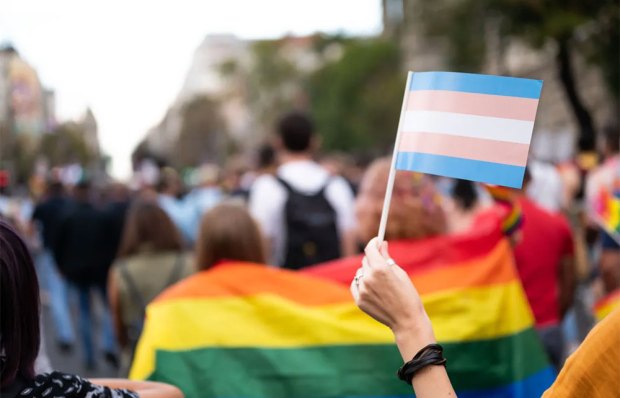Anyone who has passed through an education in thepast decade will have encountered the term ‘toxic masculinity’. It is one ofthe many charming phrases that our age has come up with to pathologise ordinarypeople. Brewing for some decades, the concept of ‘toxic masculinity’ wasbrought into the mainstream in the last ten years by fourth-wave feministsintent on portraying half of our species as ‘problematic’, to use another ofthe delightful watchwords of our era.
The simple assertion of the ‘toxicmasculinity’ crowd is that specifically male behaviours are a problem. The mostextreme aspects of male misbehaviour are portrayed as though they are routine.So young feminists insist that we live in a ‘rape culture’, in which men arealleged to be allowed to rape with impunity. Likewise, male-on-female domesticviolence is portrayed as a kind of pandemic. And the answer to all these thingsis essentially to feminise men – to tell specifically young heterosexual menthat they must curb their masculinity and subdue many of their most naturalinstincts. In every direction their path is cut off. For instance, men who cometo the rescue of women are dismissed as ‘white knighting’, as though even thewish to help a woman is proof of ‘toxic masculinity’.
Of course, the concept itself is toxic – quiteas much so as if our age decided to talk about women in a similar way. There’sno reason why ‘toxic femininity’ couldn’t be made as popular a concept as itsopposite number. There are certainly plenty of grounds for talking about suchthings. For if men are, for example, more prone to physical violence then thedata also shows that women are more prone to subtler methods of underminingopponents, such as reputational destruction. There are behaviours that are moremale and behaviours that are more female, and the fact that some members ofeach sex are quite capable of one or other, or both, does not negate that fact.
Nevertheless, we do not hear much talk oftoxic femininity. It is men who have been portrayed in recent years as aproblem. And if you don’t believe this, speak to any teenage boy. They will beable to tell you some version of this.
Yet there must be consequences tointerventions this hamfisted. It is one thing to try to fine-tune our species;quite another to attempt to do so while wearing mittens. And that is whatconcepts such as toxic masculinity are. They are blundering, blunt, ineptefforts at rewiring – efforts that must have consequences.
In New York last week a woman sitting on thesubway was approached by a madman. Not a particularly rare occurrence initself. But this interaction was of the kind that sticks in the mind. For theman sat down beside the stranger and when she got up he grabbed her by the hairand yanked her back down, holding her in place in this way. Clearly terrifiedand crying for help, there she stayed. Was this an example of ‘toxicmasculinity’? It would be a stretch to say so.
What was clear was that the answer should havebeen a bit of good, decent masculinity. In such a situation the men in thecarriage (and there were many) should have stepped forward and sorted this guyout themselves. Perhaps it would have just taken one of them to confront him,or perhaps it would have taken several. The man in question was clearlydisturbed and violent. Still, the men present clearly ought to have donesomething. I would say they should now hold their manhood cheap, but I suspectthey do already. One man filmed it on his mobile phone – the pinnacle ofpresent-day courage. Others stared into their devices in the hope that it wouldall go away.
And in one way it is understandable. Everybodyhas heard stories in which someone has stood up to some thug and been knifed orshot for their troubles. And then there is the reputational risk of any badinteraction in the age of camera phones. Since the offender on this occasionwas black, perhaps the other men in the carriage feared the possible racialcomponent of any resulting footage.
In anycase America had to confront this question on a far bigger stage this week.After the initial shock over the school shooting in Uvalde, Texas, the countrywas shocked anew to learn that the police had been on the scene for a long timewhile the gunman was shooting elementary school children in their classroom.Every time there is a school shooting there is the inevitable discussion aboutwhether the answer to a bad guy with a gun isn’t a good guy with a gun. But onthis occasion it transpires that there were plenty of ‘good guys’ with guns.Nineteen of them, in fact. One for each slain child. For the best part of anhour and a half these policemen sat around in a corridor waiting for backup whilethe bad guy had the scene to himself.
Those defending the police say the commandingofficer thought it was a hostage situation. But for 90 minutes phone calls werecoming from inside the school, including from children, begging the police toenter. Until a Border Patrol tactical team finally made it to the scene, themost action the police saw was in handcuffing and tasering parents who weredesperately trying to save their children.
Does this prove that masculinity is dead? Notin itself, no. But it should remind us that society needs men to behave incertain ways at certain times. In warfare masculinity is a very good thing, asit is for the police, firemen and many others. It would have been good to seesome masculinity on that New York subway. It would have been good to have seensome male heroism in Texas. But there must be consequences to telling men thattheir instincts are wrong, that their behaviour is wrong, and that all theirintentions are tainted by dint of their chromosomes.
Got something to add? Join the discussion and comment below.
Get 10 issues for just $10
Subscribe to The Spectator Australia today for the next 10 magazine issues, plus full online access, for just $10.
You might disagree with half of it, but you’ll enjoy reading all of it. Try your first month for free, then just $2 a week for the remainder of your first year.















Comments
Don't miss out
Join the conversation with other Spectator Australia readers. Subscribe to leave a comment.
SUBSCRIBEAlready a subscriber? Log in